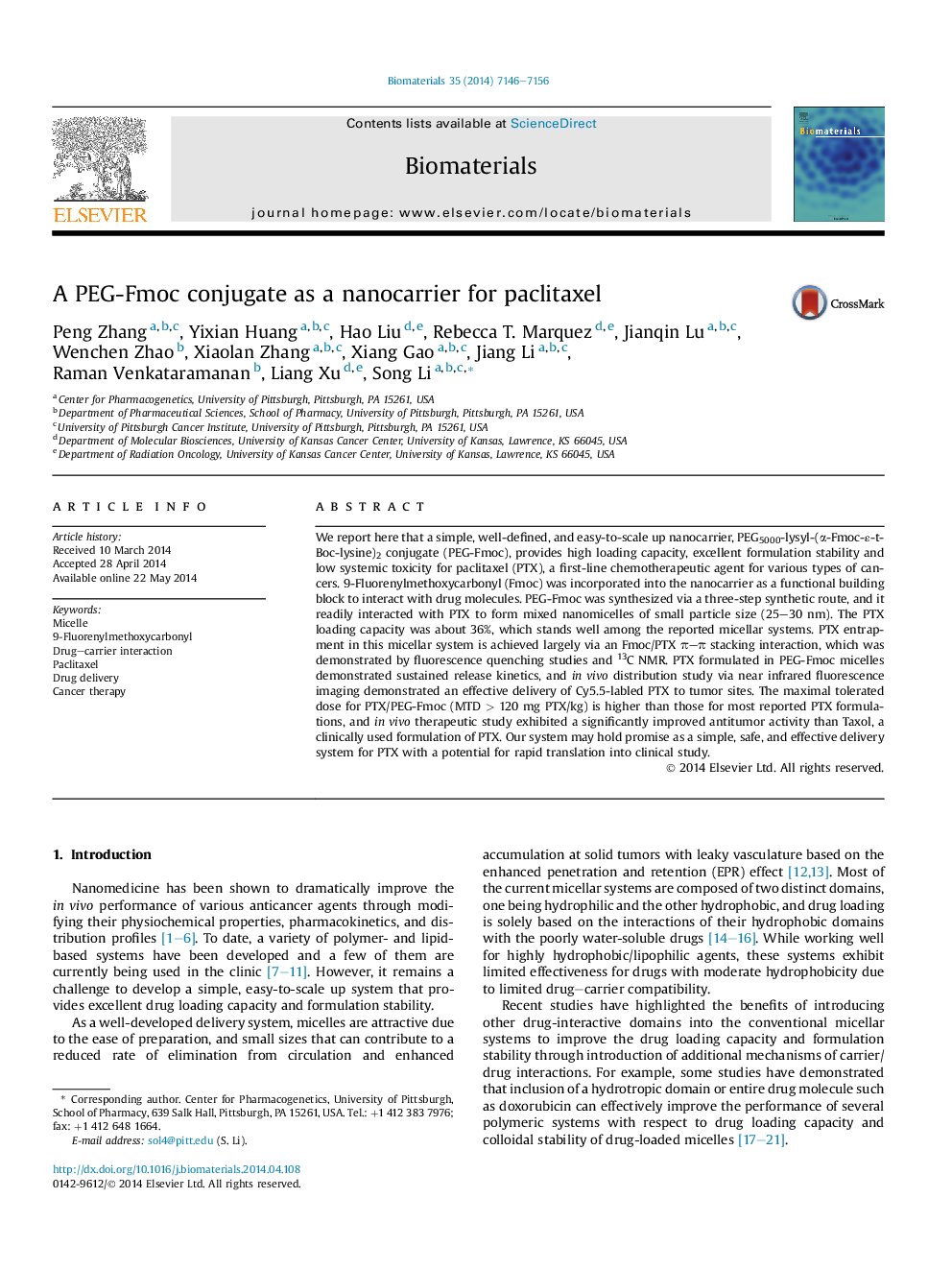| Article ID | Journal | Published Year | Pages | File Type |
|---|---|---|---|---|
| 10227576 | Biomaterials | 2014 | 11 Pages |
Abstract
We report here that a simple, well-defined, and easy-to-scale up nanocarrier, PEG5000-lysyl-(α-Fmoc-ε-t-Boc-lysine)2 conjugate (PEG-Fmoc), provides high loading capacity, excellent formulation stability and low systemic toxicity for paclitaxel (PTX), a first-line chemotherapeutic agent for various types of cancers. 9-Fluorenylmethoxycarbonyl (Fmoc) was incorporated into the nanocarrier as a functional building block to interact with drug molecules. PEG-Fmoc was synthesized via a three-step synthetic route, and it readily interacted with PTX to form mixed nanomicelles of small particle size (25-30 nm). The PTX loading capacity was about 36%, which stands well among the reported micellar systems. PTX entrapment in this micellar system is achieved largely via an Fmoc/PTX Ï-Ï stacking interaction, which was demonstrated by fluorescence quenching studies and 13C NMR. PTX formulated in PEG-Fmoc micelles demonstrated sustained release kinetics, and in vivo distribution study via near infrared fluorescence imaging demonstrated an effective delivery of Cy5.5-labled PTX to tumor sites. The maximal tolerated dose for PTX/PEG-Fmoc (MTD > 120 mg PTX/kg) is higher than those for most reported PTX formulations, and in vivo therapeutic study exhibited a significantly improved antitumor activity than Taxol, a clinically used formulation of PTX. Our system may hold promise as a simple, safe, and effective delivery system for PTX with a potential for rapid translation into clinical study.
Related Topics
Physical Sciences and Engineering
Chemical Engineering
Bioengineering
Authors
Peng Zhang, Yixian Huang, Hao Liu, Rebecca T. Marquez, Jianqin Lu, Wenchen Zhao, Xiaolan Zhang, Xiang Gao, Jiang Li, Raman Venkataramanan, Liang Xu, Song Li,
